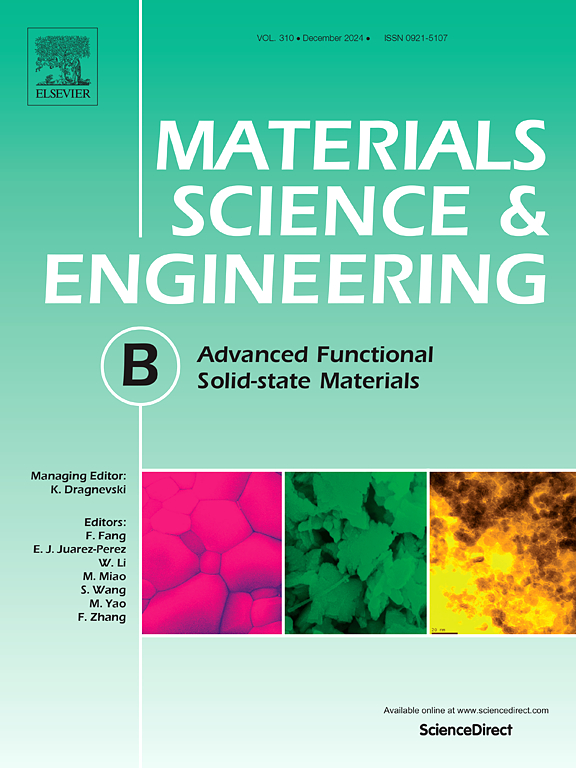Silver vanadate-coupled zinc oxide nanocrystals: Solution-based synthesis and sustainable photoreduction of nitrobenzene to aniline under visible light
IF 3.9
3区 材料科学
Q2 MATERIALS SCIENCE, MULTIDISCIPLINARY
引用次数: 0
Abstract
Visible light-activated photocatalyst represents a sustainable and eco-friendly technique for several redox reactions. Particularly, selective organic transformation using semiconductor photocatalysts is one of the hottest applications for many industries. Aniline (AN) is a well-known organic substance in such fields. In this study, a polymeric surfactant-aided growth of zinc oxide (ZnO) nanostructures followed by incorporation of 3.0–12.0 wt% of silver vanadate (AgVO3) nanoparticles is performed to produce visible light active nanocomposite photocatalysts. The prepared materials exposed a significant absorbance of visible light irradiation with mesoporous textures. The 9.0 wt% AgVO3-supported ZnO has demonstrated a substantial reduction of its bandgap down to 2.7 eV compared to 3.1 eV in the pure ZnO. This advanced photocatalyst is applied for efficient photoconversion of AN by the photoreduction of nitrobenzene (NB) under visible light. The use of 2.0 mg mL−1 dose of 9.0 wt% AgVO3/ZnO can completely convert NB into AN within only 45 min at a reaction rate of 111.05 × 10−3 min−1. This optimized photocatalyst also indicates a sustainable regeneration five times with a promised 93.6 % of its original performance. The improved electron-hole separation, as well as the migration, are the key factors for the best performance as well as revealed from the detailed depictions.

求助全文
约1分钟内获得全文
求助全文
来源期刊

Materials Science and Engineering: B
工程技术-材料科学:综合
CiteScore
5.60
自引率
2.80%
发文量
481
审稿时长
3.5 months
期刊介绍:
The journal provides an international medium for the publication of theoretical and experimental studies and reviews related to the electronic, electrochemical, ionic, magnetic, optical, and biosensing properties of solid state materials in bulk, thin film and particulate forms. Papers dealing with synthesis, processing, characterization, structure, physical properties and computational aspects of nano-crystalline, crystalline, amorphous and glassy forms of ceramics, semiconductors, layered insertion compounds, low-dimensional compounds and systems, fast-ion conductors, polymers and dielectrics are viewed as suitable for publication. Articles focused on nano-structured aspects of these advanced solid-state materials will also be considered suitable.
 求助内容:
求助内容: 应助结果提醒方式:
应助结果提醒方式:


